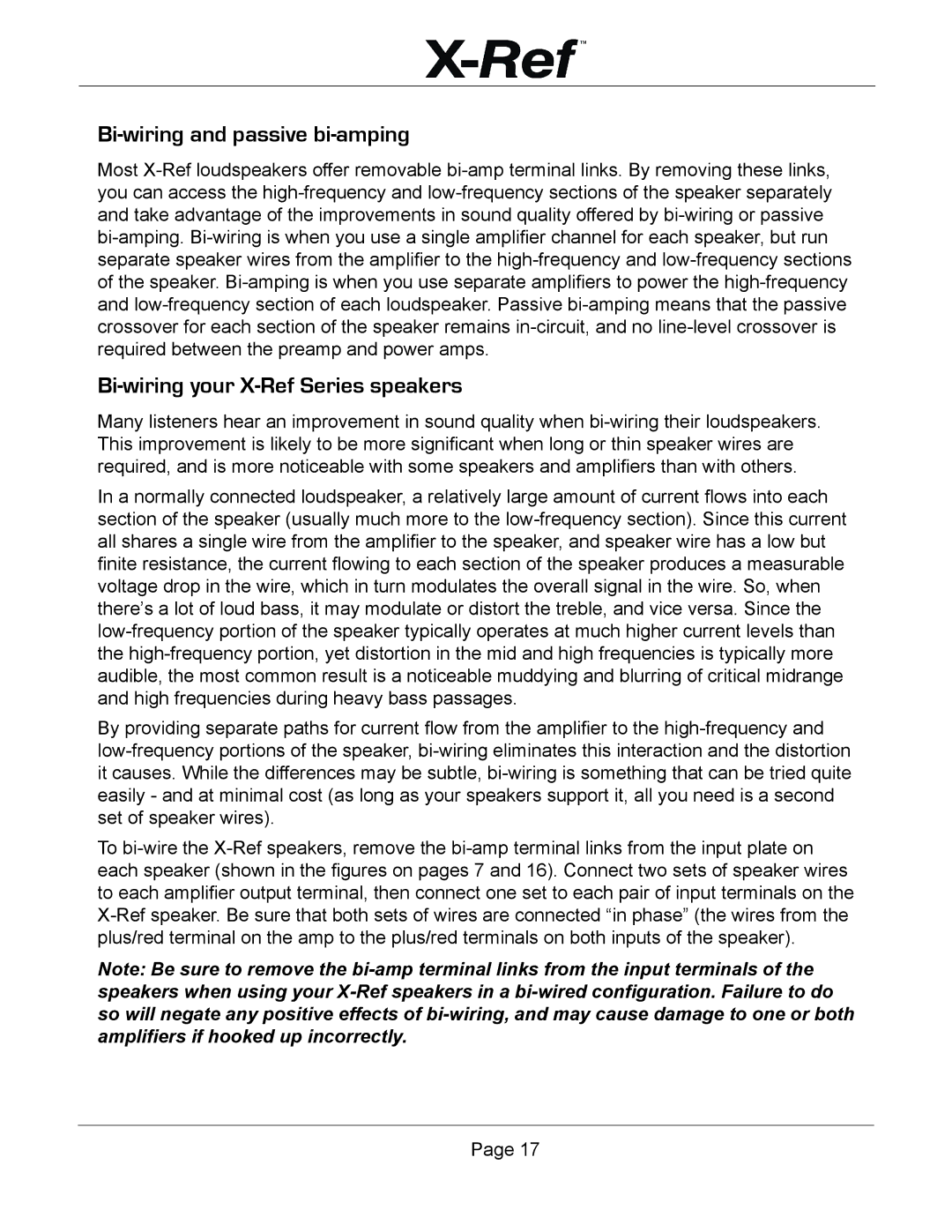X-Ref specifications
Emotiva has long been synonymous with high-quality audio equipment, and the Emotiva X-Ref series continues this tradition with exceptional sound performance and cutting-edge technology. The X-Ref series is designed for audiophiles who demand the best in both functionality and aesthetics.At the heart of the X-Ref series is its commitment to delivering an immersive listening experience. Each speaker in the lineup features proprietary drivers that have been engineered for high efficiency and extraordinary clarity. The midrange drivers utilize a woven composite material to reduce distortion, providing a natural and smooth vocal reproduction. Additionally, the high-frequency drivers are meticulously crafted to ensure precise sound staging and detail, allowing listeners to hear every nuance in their favorite recordings.
One of the standout features of the X-Ref series is its advanced waveguide technology. This innovation allows for optimal dispersion of sound, resulting in a wider sweet spot and improved imaging. Whether you are seated directly in front of the speaker or off to the side, you can expect consistent sound quality and an accurate representation of your music.
The build quality of the X-Ref speakers is equally impressive. Each cabinet is constructed from high-density MDF to minimize resonance. The elegantly designed enclosures not only look stunning but are also acoustically optimized to enhance performance. The striking finish options, including high-gloss and matte surfaces, allow these speakers to blend seamlessly into any home décor.
Connectivity is another area where the X-Ref series excels. With bi-wire and bi-amp capabilities, users can customize their audio setup to their preferences. The included terminals accept various cable types, ensuring compatibility with a wide range of audio systems.
Emotiva's dedication to performance extends beyond hardware; the X-Ref series also incorporates sophisticated crossover networks that utilize high-quality components. These crossovers ensure that each driver receives the correct frequency range, leading to a cohesive and balanced sound.
In summary, the Emotiva X-Ref series embodies the company's commitment to high-performance audio. With advanced driver technology, waveguide design, thoughtful construction, and user-friendly connectivity options, these speakers are sure to satisfy even the most discerning audio enthusiasts. Whether you are an avid music lover or a home theater aficionado, the X-Ref series is engineered to elevate your listening experience to new heights.

